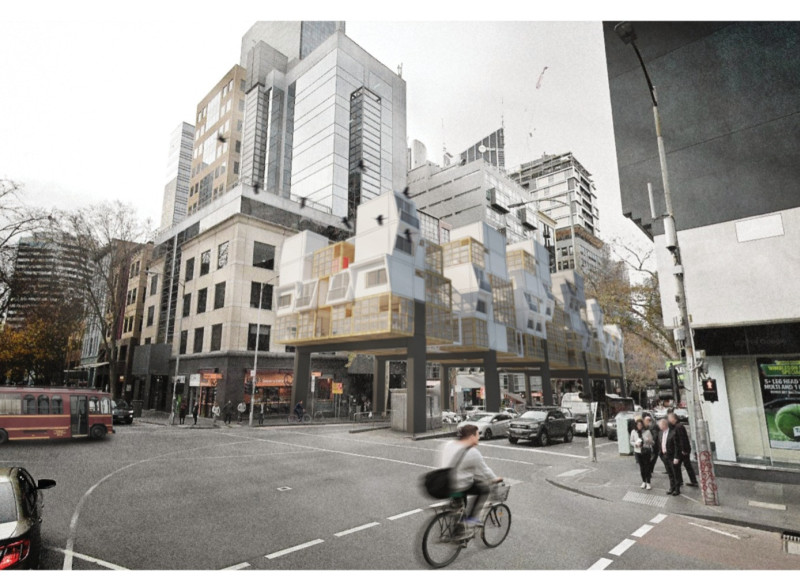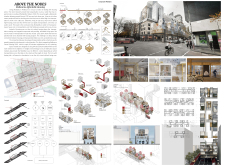5 key facts about this project
The project is located in Melbourne's Central Business District (CBD) and addresses the pressing issue of affordable housing. The design focuses on integrating residential units above existing transportation nodes to improve accessibility for residents. By placing homes near essential transport links, the aim is to provide a practical solution that balances living costs with the convenience of urban life.
Conceptual Framework
The design framework revolves around the idea of merging living spaces with transportation infrastructure. Residential units are positioned above bike paths and tram lines, enhancing urban density while ensuring residents can easily access city amenities. This method not only tackles the affordability challenges faced by many but also highlights the potential for urban areas to develop in a more integrated manner.
Materials and Construction
Structural Insulated Panels (SIPs) are utilized as the main construction material. These panels are lightweight and suitable for prefabrication, allowing for fast assembly while providing good energy efficiency and thermal insulation. The incorporation of SIPs supports the goal of creating adaptable living spaces that can meet the demands of an urban environment without sacrificing safety or comfort.
Civic Integration
The integration of housing with transportation aligns with broader city planning initiatives, especially the Future Planning 2050 strategy. This initiative promotes the idea of 20-minute neighborhoods, ensuring vital services are within easy reach. By designing shared spaces that encourage interaction among residents, the project contributes positively to the urban landscape, fostering a sense of community.
Residential Experience
Design elements, such as sloping sides, enable residents to overlook the bustling city while maintaining their privacy. This thoughtful consideration enhances the living experience, balancing the need for visibility with the desire for personal space. The layout creates a harmonious relationship between residents and their urban surroundings, enriching daily life in the city.



















































